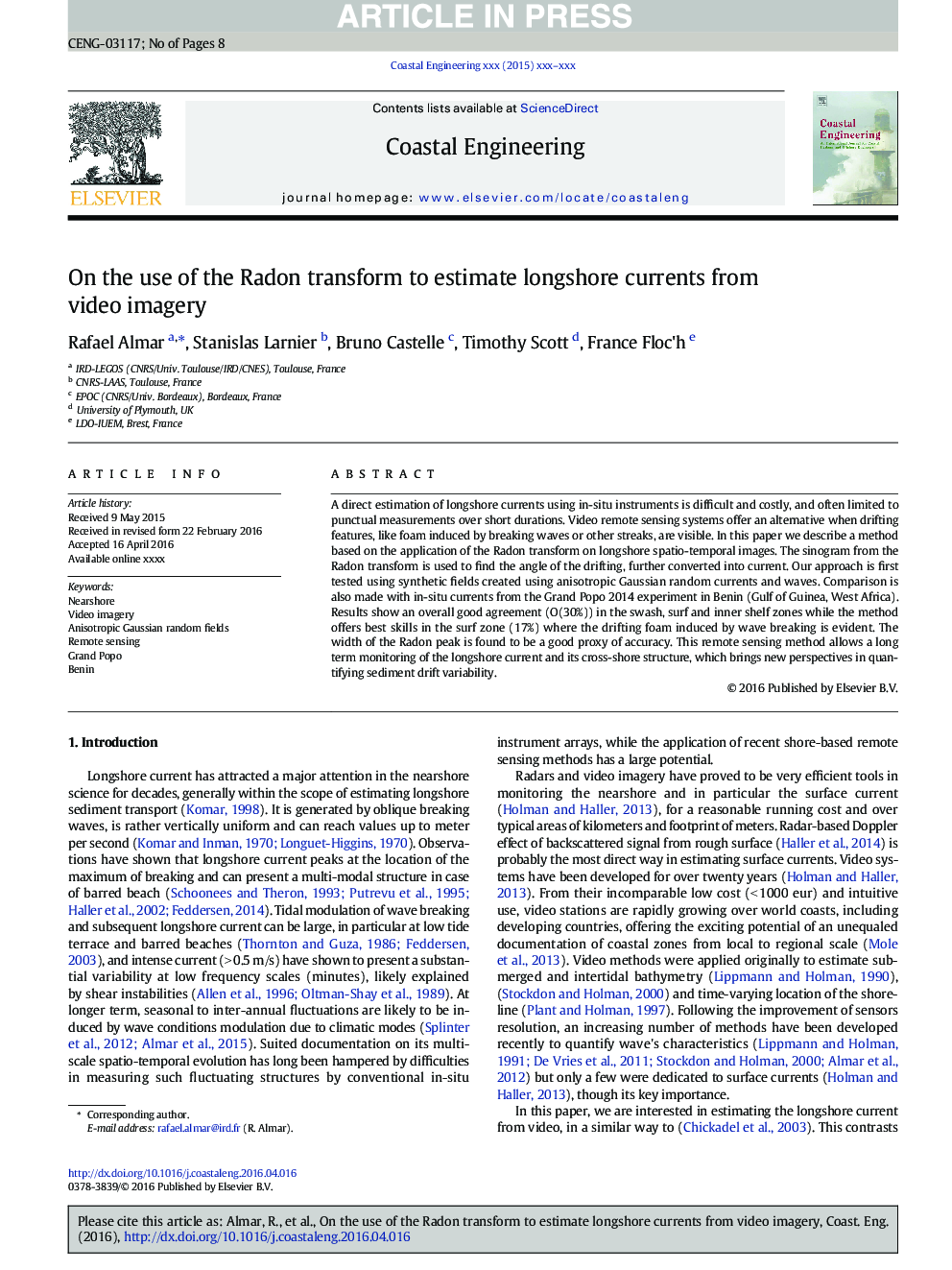| Article ID | Journal | Published Year | Pages | File Type |
|---|---|---|---|---|
| 8059727 | Coastal Engineering | 2016 | 8 Pages |
Abstract
A direct estimation of longshore currents using in-situ instruments is difficult and costly, and often limited to punctual measurements over short durations. Video remote sensing systems offer an alternative when drifting features, like foam induced by breaking waves or other streaks, are visible. In this paper we describe a method based on the application of the Radon transform on longshore spatio-temporal images. The sinogram from the Radon transform is used to find the angle of the drifting, further converted into current. Our approach is first tested using synthetic fields created using anisotropic Gaussian random currents and waves. Comparison is also made with in-situ currents from the Grand Popo 2014 experiment in Benin (Gulf of Guinea, West Africa). Results show an overall good agreement (O(30%)) in the swash, surf and inner shelf zones while the method offers best skills in the surf zone (17%) where the drifting foam induced by wave breaking is evident. The width of the Radon peak is found to be a good proxy of accuracy. This remote sensing method allows a long term monitoring of the longshore current and its cross-shore structure, which brings new perspectives in quantifying sediment drift variability.
Related Topics
Physical Sciences and Engineering
Engineering
Ocean Engineering
Authors
Rafael Almar, Stanislas Larnier, Bruno Castelle, Timothy Scott, France Floc'h,
